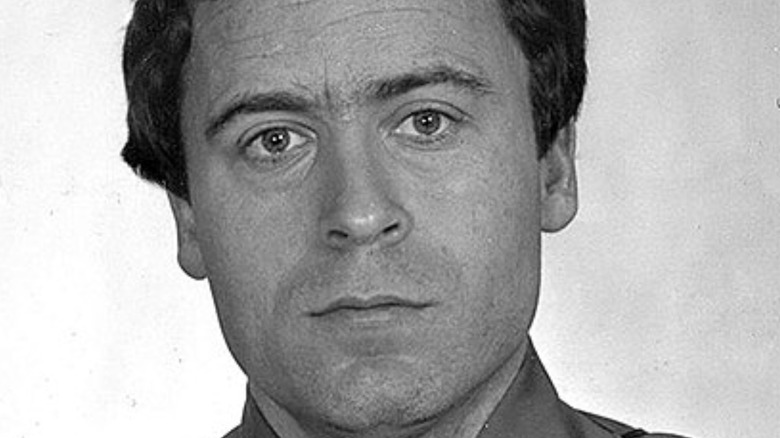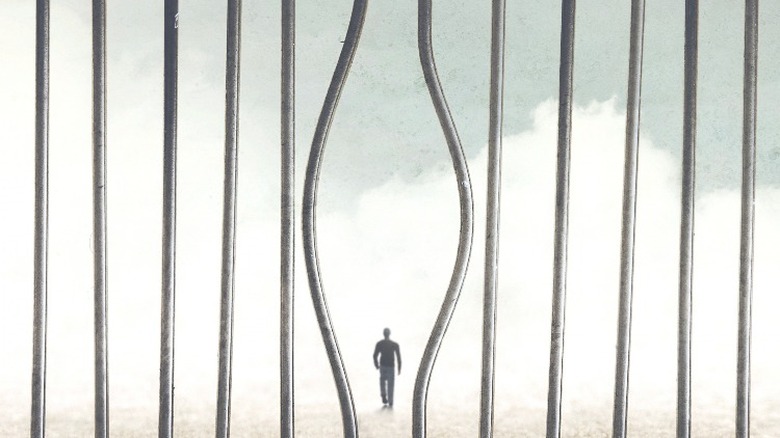Did Ted Bundy Ever Actually Confess? Here's What We Know
Ted Bundy's execution in 1989 marked the end of one of the world's most prolific serial killers. On death row since 1979, Bundy had made the most of his post-conviction years, offering his assistance with criminal profiling to the FBI. According to Biography, Bundy's offer to help was accepted on more than one occasion, and even helped them capture Gary Ridgeway, the infamous Green River Killer.
However, with all the help Bundy was throwing to various police agencies, he was keeping mum about the crimes that he was convicted of. Convicted in the state of Florida for three murders, investigators were aware that Bundy was probably guilty of a lot more. If he wouldn't even admit to the ones he was imprisoned for, what were the odds that he would confess to any others?
In early 1989, with his execution date looming in the background, Bundy was beginning to have second thoughts about his silence. Bundy's road to prison was a brutal one, littered with the bodies of dozens of innocent victims. Would he eventually confess?
A brutal killing streak
One of the most intelligent and educated serial killers on record, Ted Bundy was a recent college graduate when he murdered his first victim in 1974 (via Crime Museum). It wasn't long after the first murder that Bundy began to develop an M.O. that would quickly suit his murderous desires. Bundy had a VW, which he removed the front seat from. He would then find a prospective victim, and lure them in with a plea for help (he would sometimes use phony casts or crutches to appear more harmless). Bundy would sometimes impersonate law enforcement officers as a way to put his marks at ease.
Bundy would catch these women off guard, beating them with pipes or metal bars. He would then place them in the VW, the missing seat giving him a perfect place to set them where they couldn't be easily seen from outside the vehicle. The women were later beaten, raped, and strangled to death.
Bundy committed murder after murder using this M.O., and assaulted many more. By the time Bundy left Washington state for law school in Utah in the fall of 1974, his body count was high. It was about to get even higher.
Capture, escape, and recapture
Ted Bundy's kill total had reached 12 confirmed by November 1974. And Bundy showed no signs of slowing down. On November 8, 1974, Bundy attempted to kidnap Carol DaRonch. Posing as a police officer, he approached DaRonch with a story about how someone had tried to steal her car. Bundy instructed DaRonch to accompany him to the police station, where a suspect was being held. Bundy then attacked DaRonch with a metal pipe. But unlike his previous victims, DaRonch was able to fight back and escape (via Insider).
The following August, Bundy was spotted by a Utah highway patrolman. The officer thought that the car Bundy was driving was suspicious, so he followed it. Upon being tailed, Bundy took off and lead the patrolman on a high-speed chase. Finally giving up, he pulled over and allowed the patrolman to search his vehicle. The items the patrolman found raised some eyebrows (a ski mask, a crowbar, and handcuffs). The officer recalled a man who resembled Bundy, as well as the description of the VW he was driving, fitting the description of the man who DaRonch reported for assault. This led to Bundy's arrest, and eventual conviction on assault and kidnapping charges.
Following his conviction, Bundy was charged with the murder of Caryn Campbell. While at a pretrial hearing, Bundy jumped from a two-story window and escaped. He was apprehended by the FBI days later.
But this wouldn't be Bundy's only escape attempt.
Bundy's spree continues
According to Insider, Ted Bundy made another successful escape on December 30, 1977. This time, Bundy removed a light fixture in his cell at the Garfield County Jail, where he was being held on charges. He wiggled through the hole, crawled around the ceiling, then dropped through it at another spot in the building. Bundy was able to walk out undetected.
Bundy made his way to Florida, where he resumed killing young female victims (via Crime Museum). Before he was finally recaptured on February 15, 1978, Bundy took the lives of an additional six women. Three of them were the result of his late night attack at the Chi Omega sorority house at Florida State University.
Bundy was convicted initially on two counts of murder in Florida, and given two death sentences for his crimes (via Biography). In 1980, he was charged with, and convicted of one additional murder, resulting in one more death sentence. Bundy maintained his innocence throughout questioning, and all phases of his numerous trials. Bundy also appealed his cases all the way to the United States Supreme Court, only to be rejected every time.
As his execution date began to loom ever so close, Bundy summoned officials through his post-conviction attorney, Polly Nelson. In what Nelson described as a way to buy himself some time, Bundy began to confess his crimes (via Oxygen).
A last-minute confession
Ted Bundy believed that if he confessed his crimes, the courts would postpone his execution (via Oxygen). By confessing, Bundy figured that the Florida governor would allow Bundy to live so that he could be used as a tool to locate the bodies of some of his missing victims. But Bundy was wrong. His appeals were all used up, and the governor's office ignored Bundy's request for a stay of execution. He was put to death on January 24, 1989, per Biography.
In the days prior to his death, Bundy confessed to the chilling murders of 36 women. The murders took place across multiple states, and most of the victims fit eerily similar descriptions. Most were young women (one as young as 12), who had long, dark hair that was parted down the middle (via Heavy).
Investigators believe that Bundy could have been responsible for the deaths of up to 100 women. But with the man the media dubbed the Co-ed Killer now dead for over 30 years, it's highly unlikely that the world will ever know exactly how many women Bundy took from this life.




